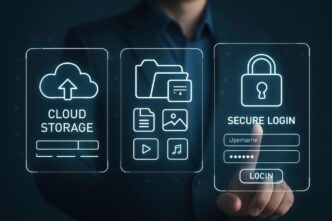Executive Summary
The Story So Far
Why This Matters
Who Thinks What?
In today’s cloud-first economy, Service Organization Control 2 (SOC 2) compliance has emerged as a non-negotiable standard for Software-as-a-Service (SaaS) businesses, dictating their ability to secure customer trust and operate competitively. This critical audit framework, developed by the American Institute of Certified Public Accountants (AICPA), assesses how service organizations handle customer data based on five Trust Service Criteria, providing an independent assurance report that is vital for demonstrating robust security and operational integrity to prospective and existing clients.
Understanding SOC 2 Compliance
SOC 2 is not a one-size-fits-all certification but rather a framework for auditing internal controls. It focuses on how a service organization manages customer data, ensuring the security, availability, processing integrity, confidentiality, and privacy of that data. Unlike other compliance standards that might focus on specific industries, SOC 2 is broadly applicable to any service provider that stores or processes customer information in the cloud.
For SaaS companies, this means a rigorous examination of their systems and processes related to data handling. It evaluates the design and operating effectiveness of controls that safeguard customer information. Achieving SOC 2 compliance signals a deep commitment to data protection, which is paramount in an era of escalating cyber threats and data breaches.
Why SOC 2 is Indispensable for SaaS Businesses
The imperative for SaaS companies to master SOC 2 extends far beyond mere regulatory obligation; it is a fundamental driver of business growth and market differentiation. In a landscape where data security incidents can instantly erode public trust and cripple a brand, demonstrating proactive security measures is a powerful competitive advantage.
Customers, particularly enterprise clients, increasingly demand proof of stringent security practices before entrusting their data to a third-party SaaS provider. A SOC 2 report serves as this definitive proof, often becoming a prerequisite in vendor selection processes. Without it, many SaaS companies find themselves locked out of lucrative markets and unable to scale.
The Five Trust Service Criteria
SOC 2 compliance is built upon a foundation of five interconnected Trust Service Criteria. SaaS businesses can choose which criteria are relevant to their services, though Security is always mandatory. Understanding each criterion is crucial for building an effective control environment.
Security
This criterion refers to the protection of information and systems from unauthorized access, unauthorized disclosure of information, and damage to systems that could compromise the availability, integrity, confidentiality, and privacy of information or systems. It encompasses network firewalls, intrusion detection, multi-factor authentication, and data encryption.
Availability
The Availability criterion addresses whether systems are available for operation and use as committed or agreed. It involves controls related to network performance, site monitoring, disaster recovery, and incident response planning. For SaaS, this means ensuring that users can access the service reliably and without undue interruption.
Processing Integrity
Processing Integrity refers to whether system processing is complete, valid, accurate, timely, and authorized. This criterion is vital for services that perform critical data transformations or financial calculations. It ensures that data is processed correctly and consistently, aligning with business objectives.
Confidentiality
Confidentiality pertains to the protection of information designated as confidential from unauthorized access and disclosure. This includes intellectual property, business plans, and sensitive customer data. Controls often involve access restrictions, data classification, and secure deletion practices.
Privacy
The Privacy criterion addresses the collection, use, retention, disclosure, and disposal of personal information in conformity with the entity’s privacy notice and generally accepted privacy principles. While similar to confidentiality, privacy specifically focuses on personally identifiable information (PII) and adherence to privacy frameworks like GDPR or CCPA.
Types of SOC 2 Reports: Type 1 vs. Type 2
SaaS companies typically pursue one of two types of SOC 2 reports, each serving a distinct purpose in demonstrating compliance effectiveness.
SOC 2 Type 1 Report
A SOC 2 Type 1 report describes a service organization’s systems and assesses the suitability of the design of its controls at a specific point in time. It provides a snapshot of the controls a company has implemented. This report is often a starting point for many SaaS companies, demonstrating their foundational commitment to security without the long observation period.
SOC 2 Type 2 Report
A SOC 2 Type 2 report goes further, detailing the service organization’s systems and evaluating the suitability of the design and operating effectiveness of its controls over a period of time, typically 3 to 12 months. This report offers a much stronger assurance to clients, as it proves that the controls are not only well-designed but also function effectively in practice. Most enterprise customers ultimately require a Type 2 report.
The Path to SOC 2 Compliance
Achieving SOC 2 compliance is a structured process that requires significant internal effort and external validation. It typically involves several key stages.
Preparation and Scoping
The initial phase involves understanding the scope of the audit, including which Trust Service Criteria are relevant and which systems and processes will be included. Companies must identify their existing controls, conduct a gap analysis, and implement any missing controls to meet the chosen criteria.
Control Implementation and Documentation
This stage focuses on developing and formally documenting policies, procedures, and evidence of controls. This includes access control policies, incident response plans, data backup strategies, and employee training records. Robust documentation is crucial for demonstrating compliance to auditors.
Readiness Assessment (Optional but Recommended)
Many SaaS companies opt for a readiness assessment conducted by an independent auditor. This pre-audit step helps identify any remaining weaknesses or control gaps before the formal audit begins, saving time and resources in the long run.
Formal Audit
An independent CPA firm conducts the formal audit, reviewing documentation, interviewing personnel, and testing controls. For a Type 2 report, the auditors will observe the controls in operation over the defined period to assess their effectiveness.
Report Issuance
Upon successful completion of the audit, the CPA firm issues a SOC 2 report. This report is then shared with customers and prospects, serving as a testament to the SaaS company’s commitment to security and data protection.
Beyond Compliance: Strategic Advantages
While compliance is a primary driver, the benefits of mastering SOC 2 for SaaS businesses extend into strategic areas of operations and market positioning. It is an investment that yields significant returns.
Firstly, SOC 2 significantly enhances a company’s ability to attract and retain enterprise clients. Many large organizations mandate SOC 2 reports as part of their vendor due diligence, making it a critical sales enablement tool. Secondly, the process of achieving SOC 2 often leads to stronger internal controls and operational efficiencies, reducing the risk of data breaches and improving overall system reliability. This proactive approach to security helps mitigate reputational damage and financial penalties associated with security incidents. Lastly, a SOC 2 report fosters a culture of security within the organization, embedding best practices into daily operations and ensuring continuous improvement in data protection.
Sustaining Trust in the Cloud Era
For SaaS businesses, decoding and mastering SOC 2 compliance is not merely an item on a checklist; it is a strategic imperative. It underpins customer trust, unlocks market opportunities, and reinforces operational resilience in an increasingly data-driven world. By embracing the principles of the Trust Service Criteria and committing to ongoing control effectiveness, SaaS providers can confidently navigate the complexities of cloud security, ensuring their longevity and success.








